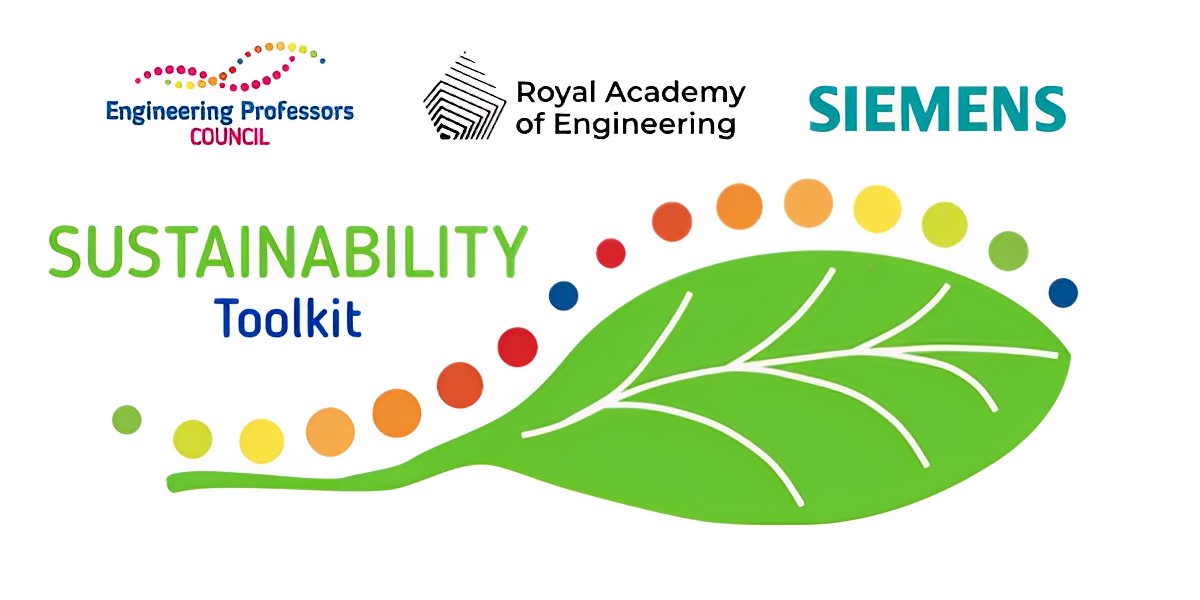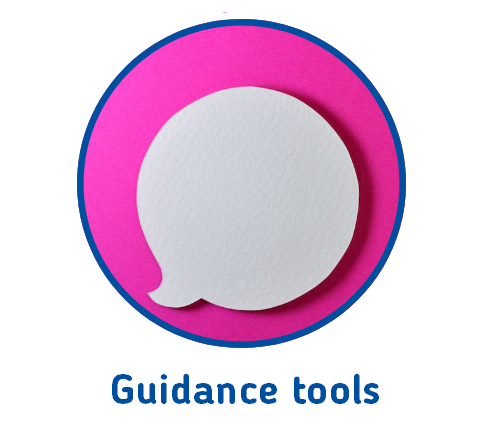Guidance tools are designed to help you learn how to do something related to embedding sustainability in engineering education. In this section of the toolkit, you’ll find guidance for:
- Adapting existing sustainability resources to specific disciplinary contexts;
- Implementing new or different pedagogies that support sustainability learning;
- Structuring lessons, modules, and programmes so that sustainability skills and outcomes are central themes;
- And more!
-
| Guidance tool | Topic | Keywords | Disciplines | Sustainability competencies | UN SDGs | Reimagined Degree Map Intervention* |
|---|---|---|---|---|---|---|
| How to integrate and assess sustainability in the design (capstone) project in Chemical Engineering | ESD in Chemical Engineering projects | Problem-based learning Education for sustainable development Circularity Circular economy Assessment AHEP Sustainability Higher education Design Data Pedagogy |
Chemical | Systems-thinking
Collaboration Integrated problem-solving |
SDG 2 (Zero hunger)
SDG 3 (Good health and well-being) SDG 4 (Quality education) SDG 12 (Responsible consumption and production) SDG 13 (Climate action) |
Active pedagogies and mindset development
Authentic assessment More real-world complexity |
| How to have a constructive or uncomfortable conversation about sustainability when you aren’t a subject-matter expert | How to talk about sustainability in engineering education. | Advocacy Collaboration Global responsibility Sustainability Systems change Climate change AHEP Higher education Pedagogy |
Any | Self-awareness
Strategic Critical thinking |
SDG 4 (Quality education)
SDG 11 (Sustainable cities and communities) SDG 13 (Climate action) |
Active pedagogies and mindset development. |
| Using problem- and project-based learning to integrate sustainability in engineering education | Opportunities and challenges for integrating ESD into engineering programmes via PBL | Education for sustainable development Project-based learning Problem-based learning Engineering design Sustainability AHEP UK-SPEC Pedagogy Higher education Curriculum. |
Any. | Critical thinking
Integrated problem-solving Collaboration |
SDG 4 (Quality education)
SDG 13 (Climate action). |
More real-world complexity
Active pedagogies and mindset development |
| Integrating sustainable development goals into computing projects | Embedding SDGs into undergraduate computing projects using problem-based learning and teamwork. | Sustainable Development Goals Problem-based learning Teamwork Design thinking Sustainability AHEP Pedagogy Higher education Communication Course design Assessment STEM Curriculum design |
Computing
Computer science Information technology Software engineering |
Collaboration
Integrated problem-solving |
All 17 SDGs | Adapt and repurpose learning outcomes
Active pedagogies and mindset development Authentic assessment. |
| Sustainability-focused learning outcomes mapped to AHEP4 | Accreditation mapping for sustainability in engineering education | Accreditation and standards Learning outcomes AHEP Student support Sustainability Higher education Students Teaching or embedding sustainability |
Any | Critical thinking
Systems thinking Integrated problem-solving Collaboration |
SDG 12 (Responsible consumption and production) | Adapt and repurpose learning outcomes
More real-world complexity Cross-disciplinarity |
| Using a factory fitness model to improve sustainability | Sustainability in manufacturing | Energy efficiency Factories Best practice Eco-efficiency Practice maturity model AHEP Student support Sustainability |
Aeronautical
Manufacturing Mechanical |
Critical thinking
Integrated problem-solving |
SDG 9 (Industry, innovation, and infrastructure)
SDG 12 (Responsible consumption and production) |
More real-world complexity |
| Workflow for embedding the SDGs across engineering programmes and modules | How to integrate the SDGs using a practical framework | Accreditation and standards Assessment Global responsibility Learning outcomes Sustainability AHEP SDGs Curriculum design Course design Higher education Pedagogy |
Any | Anticipatory
Integrated problem-solving Strategic |
SDG 4 (Quality education)
SDG 13 (Climate action) |
Adapt and repurpose learning outcomes
Authentic assessment Active pedagogies and mindset development. |
| Using projects for integrating sustainability into engineering education | Sustainability must-haves in engineering project briefs. | PBL Assessment Project brief Learning outcomes Pedagogy Communication Future generations Decision-making Design Ethics Sustainability AHEP Higher education |
Any | Integrated problem-solving
Collaboration. |
All | Adapt learning outcomes
Active pedagogies and mindsets More real-world complexity Cross-disciplinarity Authentic assessment |
| Equipping students with ethical decision-making skills by teaching sustainability from case studies |
Revealing links between ethics and sustainability by teaching with case studies. | Sustainability education Engineering ethics Environmental impact Responsible design Stakeholder engagement AHEP Sustainability Higher education Pedagogy Renewable energy Green energy Climate change Local community |
Any | Self-awareness
Normative |
SDG 4 (Quality education)
SDG 13 (Climate action) |
More real-world complexity
Active pedagogies and mindset development Cross-disciplinarity |
| Integrating sustainability into robotics higher education courses | Considering the SDGs at all stages of new robot creation | AHEP Sustainability Design Life cycle Local community Environment Circular economy Recycling or recycled materials Student support Higher education Learning outcomes. |
Computing
Robotics Electrical Computer science Information technology Software engineering Artificial Intelligence Mechatronics Manufacturing engineering Materials engineering Mechanical engineering Data |
Systems thinking
Anticipatory Critical thinking |
SDG 9 (Industry, innovation, and infrastructure)
SDG 12 (Responsible consumption and production). |
Adapt and repurpose learning outcomes
More real-world complexity |
| How can sustainability be integrated in engineering modules through mathematics content? | Implementing sustainability into technical engineering curricula | Teaching or embedding sustainability Mathematical problems Curriculum Higher education Ethical issue AHEP Sustainability Gender Environment Interdisciplinary STEM |
Any | Integrated problem-solving. | SDG 5 (Gender Equality)
SDG 6 (Clean Water and Sanitation) SDG 7 (Affordable and Clean Energy) SDG 9 (Industry, Innovation and Infrastructure) SDG 10 (Reduced Inequalities) SDG 12 (Responsible Consumption and Production) SDG 14 (Life Below Water) SDG 15 (Life on Land) |
Cross-disciplinarity |
| Inclusive and sustainable engineering solutions for economic growth in a diverse society | Links between sustainability and EDI | Sustainability AHEP Programmes Higher education EDI Economic Growth Inclusive learning Interdisciplinary Global responsibility Community engagement Ethics Future generations Pedagogy Healthcare Health |
Any | Self-awareness
Normative Collaboration Critical thinking |
All 17. | Active pedagogies and mindset development
More real-world complexity. |
| AdvanceHE’s Education for Sustainable Development Curriculum Design Toolkit | Integrating Education for Sustainable Development (ESD) into higher education curricula | Curriculum design Global responsibility Sustainability SDGs Course design Higher education Pedagogy |
Any | Anticipatory
Integrated problem-solving Strategic Systems thinking |
SDG 4 (Quality education)
SDG 13 (Climate action) |
Adapt and repurpose learning outcomes
Authentic assessment Active pedagogies and mindset development |
*The Reimagined Degree Map is a guide to help engineering departments navigate the decisions that are urgently required to ensure degrees
prepare students for 21st century challenges.
Check out our other tools that can enhance your knowledge, support your teaching practice, and help you collaborate with others. The EPC’s Sustainability Toolkit is supported by the Royal Academy of Engineering and Siemens.
If you want to suggest a resource or contribute a tool that has worked for you, find out how on our Get Involved page.
Additional information
To ensure that everyone can use and adapt these articles in a way that best fits their teaching or purpose, this work is licensed under a Creative Commons Attribution-ShareAlike 4.0 International License. Under this license you are free to share and adapt this material, under terms that you must give appropriate credit and attribution to the original material and indicate if any changes are made.
Any views, thoughts, and opinions expressed herein are solely that of the author(s) and do not necessarily reflect the views, opinions, policies, or position of the Engineering Professors’ Council or the Toolkit sponsors and supporters

